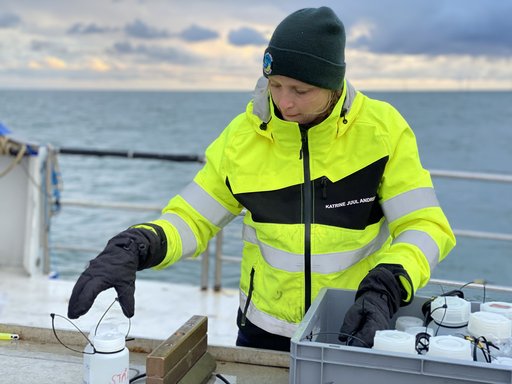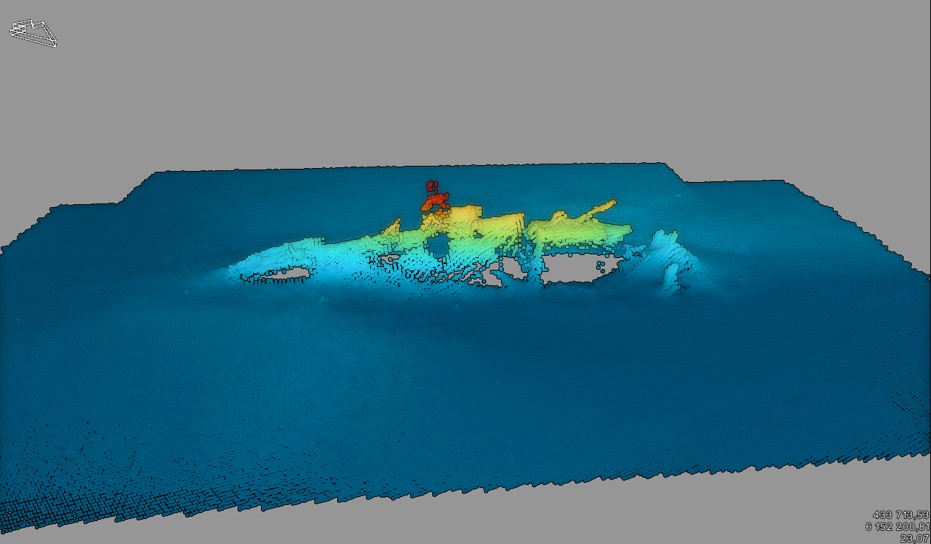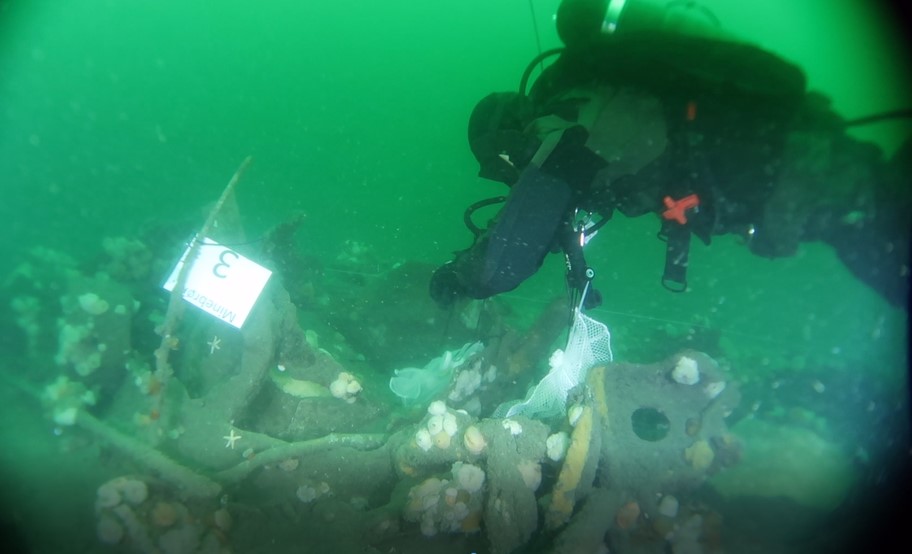Wrecks from both world wars containing explosives, fuel and other dangerous goods present pollution risks and jeopardise human activity in the North Sea. The Department of Geoscience, Aarhus University, is part of an EU project to examine where the dangers are and the risks they pose.

By Cathrine Villaume
At the bottom of the North Sea lie shipwrecks, submarine wrecks and plane wrecks from the two world wars. Many of the wrecks contain ammunition such as mines, bombs, torpedoes and grenades, and some of the wrecks also contain oil and fuel.
Consequently, the wrecks could potentially present a risk of pollution and jeopardise human activity in the area, e.g. installation of offshore wind turbines.
With the assistance of the Danish Navy’s diving service, among others, Associate Professor Katrine Juul Andresen from the Department of Geoscience has surveyed two of the wrecks in Danish waters.
The surveys are part of the comprehensive EU Interreg project North Sea Wrecks, which comprises researchers from Denmark, Germany, the Netherlands, Belgium and Norway.
"Until now, we haven't known much about the location of the wrecks or how dangerous they are. The project therefore has two goals – gathering knowledge about the number of wrecks located at the bottom of the North Sea and finding out how dangerous they are," says Katrine Juul Andresen.

Surveys of wrecks reveal pollution
Katrine Juul Andresen found the two wrecks she has surveyed with help from the Sea War Museum Jutland in Thyborøn. She found a warship and a submarine, both of which sank during the First World War with cannons and ammunition onboard.
She has surveyed the two wrecks using geophysical methods to map the seabed around the wrecks and to get an idea of their condition. Among other things, the surveys show how sand accumulates on one side of a shipwreck and buries it, while the seabed erodes on the other side of the wreck.
"If the wreck is completely buried under sand, it might not be such a big problem. The ammunition would then be well protected under the sand, and the surrounding marine environment and marine organisms would probably only be slightly polluted. But if sand is constantly washed away from the wreck by sea currents, it’s easy to imagine that the pollution can spread more easily to the surrounding sea," says Katrine Juul Andresen.
The Navy's diving service has helped take samples of the sediments, sea and marine organisms around the wreck, and Katrine Juul Andresen sent these samples to project partners at Kiel University for toxicological examination.
"The submarine sank with some powerful mines onboard. It’s been there for more than 100 years, and the hull of the submarine and the metal casing that covered the mines and the cover over the top mines are gone. The divers can see that the explosive (TNT) is currently exposed to the water column, and we can see in our samples that there is pollution around the submarine," she says.
Watch videos from one of Associate Professor Katrine Juul Andresen's expeditions in the North Sea Wrecks project.
The results from Katrine Juul Andresen's surveys suggest that the wrecks in the North Sea present a particular risk if the ammunition is exposed. They also indicate that the most urgent risk concerns pollution of the marine environment and wildlife around the wrecks.
"It can be problematic if explosives from the wrecks end up in the fish we eat. Just a little explosive is dangerous for humans. So the project is also about continuing our research into how much pollution gets into our food chain," she says.

New wreck database to help decision-makers
In order to be able to assess the risks associated with the wrecks going forward, data from the North Sea Wrecks project has been gathered in a new wreck database. For example, the database can be used if an offshore wind farm is to be built in the North Sea. With the assistance of an algorithm, the database can calculate risks for individual wrecks based on parameters such as the amount of explosives, currents at the bottom of the sea in the area, and how much of the wreck that is buried.
Katrine Juul Andresen and the other partners in the project hope that authorities will use the wreck database, and that, in the long term, a transnational cooperation can be established regarding potentially dangerous wrecks.
The risk is not getting any smaller. "The more time passes, the more the wrecks will corrode, and this increases the risk of more explosives being exposed, leaks from oil tanks and similar. Through research and the new database for risk assessment, our ambition is to be able to identify the most dangerous wrecks in the North Sea to help decide how to deal with the wrecks. This could be to remove the dangerous ammunition, for example." The project is not getting less relevant. "It's thought-provoking that while we're trying to clean up after the two previous wars, a new war is raging in Ukraine," she says.
The North Sea Wrecks project started in 2018 and will continue until June 2023. The project is in its final phase, and data from the surveys will be published and the wreck database will be updated and maintained. A final symposium will be held in the Netherlands in April.